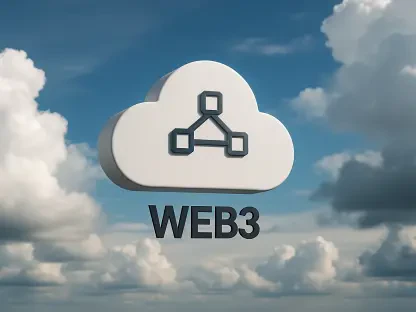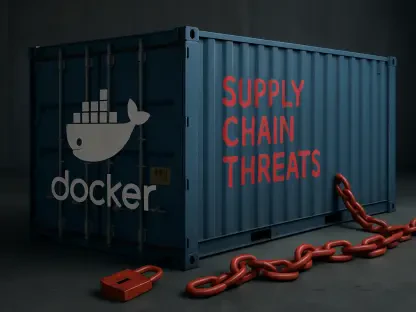In today’s enterprise environment, the importance of security in Unified Communications as a Service (UCaaS) cannot be overstated. As businesses increasingly rely on Unified Communications, ensuring the security of UCaaS platforms like Webex is crucial. With the rise of cyber threats, enterprises must not only secure their own systems but also scrutinize the security measures of their UCaaS providers.
The Backbone of Webex: Global Data Centers
Strategic Distribution for Optimal Performance
Webex, developed by Cisco, is a comprehensive cloud-based collaboration platform that serves millions of users worldwide. Central to its infrastructure is a global network of data centers, strategically distributed to maintain service quality and performance. These data centers reduce latency and improve resilience against potential outages, ensuring seamless communication and collaboration. By placing data centers in key locations, Webex can deliver high-speed, reliable services that minimize disruptions for users across the globe.
The significance of this network is evident in the recent establishment of a new data center in Manchester, UK, alongside an existing center in London. This deliberate redundancy ensures that if one facility experiences problems, the other can seamlessly take over, providing uninterrupted service to users. Webex’s strategic distribution is not limited to the UK; it includes data centers in the US, Canada, Japan, Australia, and various locations across the EU. This international infrastructure underlines Webex’s commitment to maintaining high performance and reliability for its user base.
Redundancy and Regional Compliance
The redundancy offered by Webex’s network of data centers is further enhanced by its adherence to regional compliance and local regulations. The Manchester data center’s addition highlights Webex’s strategic focus on redundancy and compliance. This redundancy ensures that service can be maintained without disruption, safeguarding against the risks associated with single points of failure. Compliance with local data residency requirements, such as the EU’s GDPR and the UK’s post-Brexit regulations, is another critical aspect of Webex’s infrastructure strategy.
Webex’s global footprint also extends to countries like Germany and the Netherlands, enabling it to comply with various regional data laws and regulations. This adherence not only assures clients that their data is handled appropriately but also allows businesses to operate within legal frameworks specific to their regions. Compliance features prominently in Webex’s customer offering, allowing enterprises to focus on their core operations, knowing that their communication data is secure and compliant with local regulations.
Multi-Layered Security Approach
Physical Security Measures
Webex’s infrastructure is designed with a multi-layered security approach that includes physical, network, and data-level protections. Physical security measures at data centers are comprehensive, incorporating advanced systems such as biometrics, video surveillance, and strict personnel protocols. Access is tightly controlled to ensure only authorized personnel can enter, thereby minimizing the risk of unauthorized access or breaches. This stringent security ensures the physical safety of the equipment and, by extension, secures the data hosted within these centers.
Additionally, all visitors to these facilities must be accompanied by authorized personnel, adding an extra layer of scrutiny and verification. The physical security protocols also involve regular audits and updates to adapt to evolving security threats and technologies. Webex’s ongoing investment in physical security not only protects the infrastructure but also underpins the trust that enterprises place in its services. By maintaining high standards of physical security, Webex demonstrates its commitment to safeguarding client data against potential physical intrusions.
Network and Data-Level Protections
In addition to robust physical security, Webex ensures network and data-level protections that are critical in today’s cyber threat landscape. The platform employs advanced firewalls, intrusion detection systems, and continuous monitoring to defend against an array of cyber threats. This multi-layered security framework is designed to detect, respond to, and mitigate potential threats before they can impact the system. These measures ensure that all communications between Webex applications, devices, and services are encrypted using the latest protocols, such as TLS 1.2 or later with strong cipher suites.
Encryption covers all media streams, including audio, video, screen sharing, and document sharing, providing end-to-end data protection. This ensures that data remains secure from interception or unauthorized access during transmission. Network security measures are further complemented by continuous monitoring and updates, ensuring the platform can proactively respond to new and emerging threats. By combining encryption with advanced network defenses, Webex creates a secure environment for enterprises to communicate and collaborate without fear of data breaches or cyber attacks.
Compliance and Data Governance
Adherence to Regulatory Requirements
Webex’s infrastructure supports both multi-tenant and Dedicated Instance deployment models, offering flexibility and compliance with varied regulatory landscapes. This ensures enterprises can meet legal requirements for data governance, an increasingly important consideration given stringent data sovereignty laws. Webex’s deployment models allow organizations to choose the most suitable option based on their specific needs and regulatory environments. Whether operating under GDPR in Europe or other local data protection laws, Webex provides the necessary frameworks to ensure compliance.
Moreover, Webex’s infrastructure is designed to accommodate the diverse regulatory requirements of different regions. By offering flexible deployment options, it enables businesses to maintain control over their data while adhering to local legal standards. This flexibility is critical in a global business environment, where data governance laws can vary significantly from one region to another. Webex’s ability to offer compliant solutions across multiple jurisdictions underpins its reputation as a reliable and secure UCaaS provider.
Secure Data Handling
Ensuring secure data handling is another cornerstone of Webex’s approach to data security and governance. Data at rest is protected with sophisticated measures, including strong encryption and secure access protocols. Access to stored data requires proper user authentication, adding a critical layer of security that ensures only authorized users can retrieve or manipulate data. Webex Connect IM further enhances this security by providing an additional layer of authentication and secure handling of information.
Webex’s comprehensive security measures extend to compliance with regulations, offering enterprises the confidence that their data governance practices meet legal standards. This adherence to secure data handling protocols is particularly important in industries subject to stringent compliance requirements, such as finance and healthcare. By ensuring that data is securely stored and accessed, Webex helps businesses mitigate risks and maintain the integrity and confidentiality of sensitive information. These measures highlight Webex’s commitment to providing a secure and compliance-oriented environment for enterprise communication.
Scalability and Performance
Carrier-Class Information-Switching Architecture
Scalability and performance are core attributes of Webex’s infrastructure, essential for supporting the robust communication needs of enterprises. By utilizing a carrier-class information-switching architecture, Webex can efficiently handle massive traffic volumes while maintaining high performance and reliability. This advanced architecture enables Webex to scale its services to meet the demands of large, global organizations without compromising on speed or service quality. Positioning data centers near major internet access points and using dedicated high-bandwidth fibers for global traffic routing further enhance performance and latency optimization.
Optimizing for latency and user experience is critical in ensuring that enterprise communication remains seamless and efficient, even under high demand. Webex’s infrastructure is designed to adapt and scale with the growing needs of its users, ensuring that service levels are maintained consistently. This level of performance is crucial in a business environment where communication delays or disruptions can have significant operational impacts. The ability to scale without sacrificing performance underscores Webex’s capability to support dynamic enterprise needs effectively.
Advanced Network Intelligence
To further enhance scalability and performance, Webex employs advanced network intelligence technologies such as ThousandEyes. These tools are deployed at critical points within Webex’s data centers, allowing customers to monitor and troubleshoot performance issues in real-time. This proactive approach ensures a seamless user experience by quickly identifying and addressing potential problems before they can impact service quality. Network intelligence systems provide valuable insights into the performance and health of the network, enabling continuous optimization and improvement.
The infrastructure’s resilience is also enhanced through comprehensive disaster recovery and backup processes. Webex employs both global site and file backups, with data stored in geographically dispersed locations to minimize the risk of data loss. These measures ensure that services can be swiftly restored in case of outages, maintaining business continuity for users. By integrating advanced network intelligence and robust disaster recovery plans, Webex reinforces its commitment to providing a reliable and high-performing UCaaS platform for enterprises.
Continuous Improvement and Expansion
Enhancing Service Quality and Compliance
Webex’s dedication to security and infrastructure excellence is evident in its continuous efforts to improve and expand its services. The addition of the Manchester data center is part of a broader strategy to enhance service quality and compliance. This expansion not only demonstrates a commitment to maintaining high standards but also strategically addresses regional regulatory requirements. By keeping UK data within national borders, Webex ensures compliance with local laws, which is crucial for gaining and maintaining customer trust.
This commitment to compliance and service quality is reflected in Webex’s proactive approach to infrastructure development. By anticipating regulatory changes and expanding its data center network accordingly, Webex positions itself as a forward-thinking provider in the UCaaS market. This forward-looking strategy enables Webex to better serve its global clientele while adhering to diverse and evolving data protection laws. The continuous improvement and expansion of Webex’s infrastructure underscore its dedication to providing a secure, reliable, and legally compliant communication platform.
Technological Advancements
In the current corporate environment, the significance of security within Unified Communications as a Service (UCaaS) cannot be understated. As companies increasingly depend on Unified Communications to facilitate their operations, safeguarding the security of UCaaS platforms, such as Webex, has become paramount. The escalation of cybersecurity threats makes it essential for businesses to not only protect their internal systems but also to meticulously evaluate the security protocols implemented by their UCaaS providers.
Security breaches can lead to severe repercussions, including data theft, financial loss, and damage to a company’s reputation. Hence, choosing a UCaaS provider that prioritizes comprehensive security measures is critical. This includes end-to-end encryption, regular security audits, and compliance with industry standards and regulations.
In addition, employee training is vital to ensure that everyone understands the security policies and follows best practices. As cyber threats evolve, ongoing education on recognizing and mitigating security risks is necessary. In conclusion, prioritizing UCaaS security is crucial for seamless and safe business communication.









